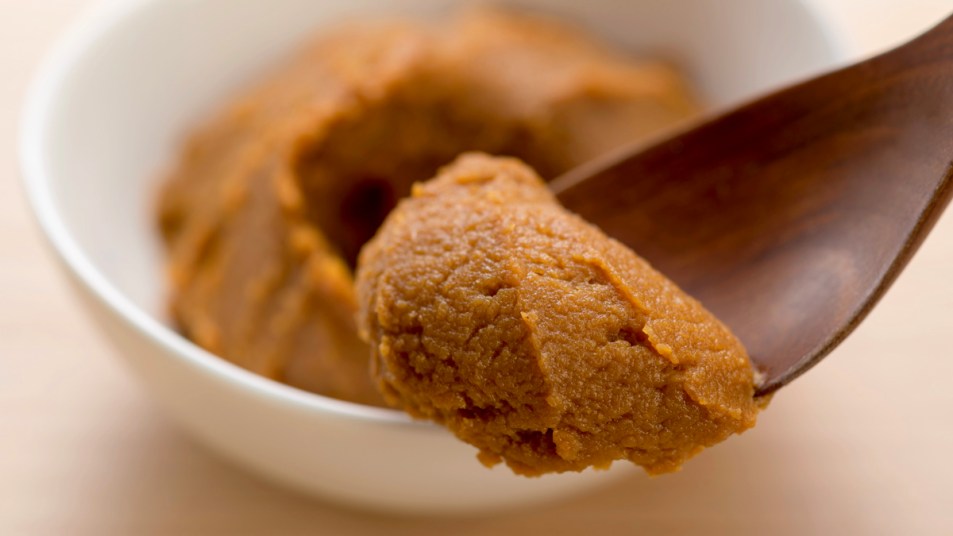Boost Your Gut, Immunity, and Brain by Adding Miso Paste to Your Meals

You might only think about miso paste when it comes already blended in with soup served alongside your sushi order (or perhaps more likely, it’s never crossed your mind at all). But you can use the traditional Japanese ingredient in countless recipes — and unlock some pretty great health benefits.
Miso paste is a thick mixture made from fermented soybeans, salt, and fungi known as koji. Like other soy-based products, it includes nutrients like fiber and protein. However, thanks to the fermentation process used to create it, you’ll also be chowing down on probiotics.
By now, most of us know that probiotics help boost digestion and gut health by promoting good bacteria growth. Research has also found that they can amp up our immunity, something we can always use but especially during an ongoing pandemic.
What’s more, scientists continue to uncover evidence that probiotics aid in warding off age-related cognitive decline and mental health issues like anxiety and depression. The fermentation process of miso paste also makes it easier for our body to actually absorb all of these perks. Plus, all the other nutrients found in miso paste like metabolism-revving potassium, bone-strengthening calcium, and cancer-fighting antioxidants.
The only thing to watch out for when adding this ingredient to your meals is the fact that it has a high level of salt — nearly half the recommended daily amount in just one ounce, to be precise. But unless you’re trying to be especially mindful about your sodium intake, you shouldn’t worry about using a little miso paste now and then.
Which is good news considering there are so many delicious ways to include it in your meals! Of course, you can whip up some yummy miso soup, but it also works well mixed into glazes for meat or seafood, vinaigrettes and salad dressings, or as some extra umami oomph in pasta sauces.
There are a few different types of miso paste, depending on the amount of soybeans used, other ingredients like rice or barley, and the time spent fermenting. White miso (also known as shiro) has the mildest taste, making it the most versatile option. The darker the paste — like yellow (shinsu), red (aka), or barley (mugi) — the stronger the flavor will be. These types of miso can easily overpower the other ingredients in a dish, so use carefully.
You can find whichever miso paste you want to try online, like Hikari Organic Miso Paste (Buy on Amazon, $17.99), Asian markets, and most grocery stores. Remember, a little goes a long way for both flavor and nutrients, so even a small tub should last you quite awhile!
















